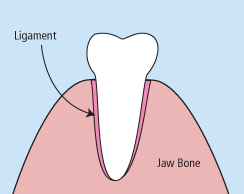Extractions & Wisdom Teeth
Extractions
There are various reasons doctors recommend the extraction of a tooth. Whether it be a baby tooth that just won’t fall out on its own, or a tooth with decay beyond the point of restoring.
The root of every tooth is held into the jawbone by a ligament lining the socket. During an extraction your dentist expands the tooth’s socket in order to create space needed to wiggle the tooth free of its supporting ligaments.
Extraction procedures typically result in minimal recovery time, and most patients can expect to go back to normal routine and exercise after a few days. Smoking and the use of straws is discouraged as it can result in delayed healing and increased risk of post-operative complications.
Once removed, your dentist may recommend replacement options for the tooth to avoid shifting or loss of chewing function.
Wisdom Teeth
Wisdom teeth are the farthest back molars in the mouth and are typically found in late teens to early adulthood. Removal of wisdom teeth is often recommended in teenage years because they are at optimal size for extraction. Extraction of wisdom teeth is recommended as they pose risk for impaction (failure to erupt), infection, and dental decay.
If it doesn’t hurt, why REmove it?
This x-ray is a classic example of problems resulting from an impacted wisdom tooth. You can see the wisdom tooth at the left of the image. It has erupted enough to create a pocket of tissue at the back of the second molar. This area traps plaque and bacteria, and has created a perfect environment for decay on the back side of the second molar. In this scenario, the second molar was significantly decayed and the nerve became infected causing the patient significant pain. The second molar was saved with a root canal and crown, but in some cases the second molar cannot be salvaged.



